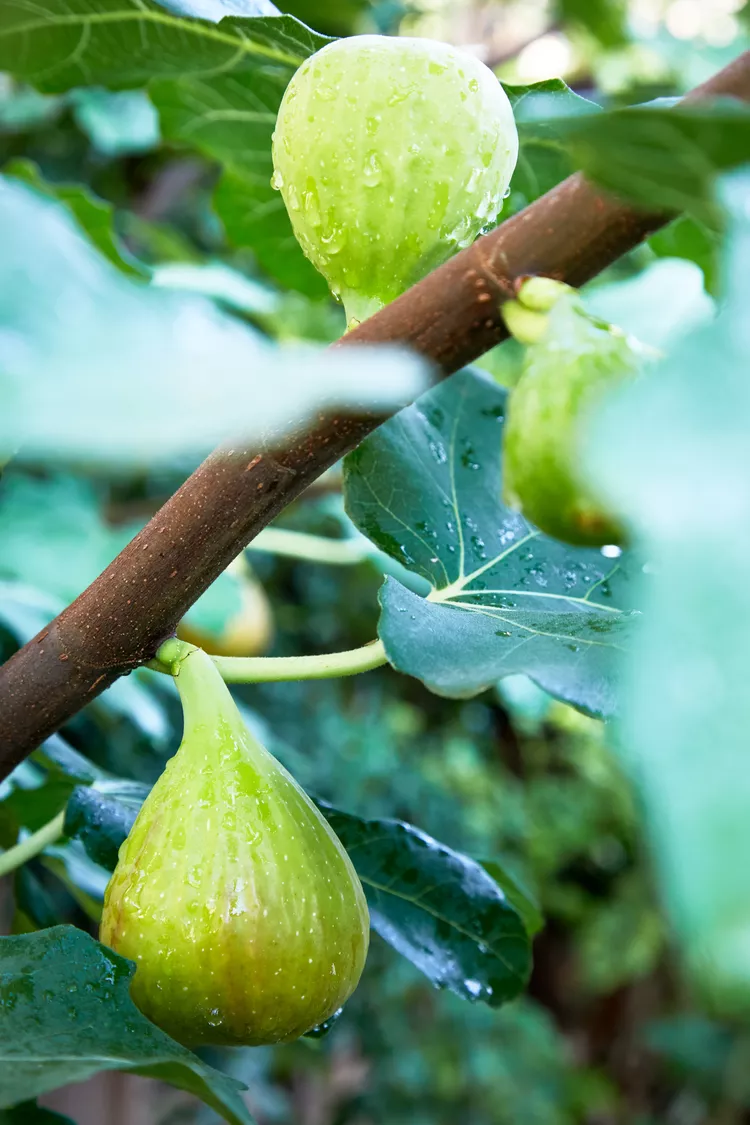9 Best Dwarf Fruit Trees to Grow in Small Spaces

They may be small, but dwarf fruit trees can still produce armloads of mouth-watering fruit in even the smallest garden spaces. Standard-sized fruit trees can grow 20 feet tall or higher and can easily overwhelm small backyards and gardens. But if you have limited garden space and dream of growing your own apples, figs, citrus, and other fruit, choosing more compact varieties that stay under 10 feet tall can be an easy solution. Use this guide to find the best small trees for your backyard. Some dwarf fruit trees will even grow in large containers.
Apple Trees
Apples are one of the easiest fruit to grow, and most varieties can be cultivated in regions as cool as USDA Hardiness Zone 4, although they can adapt to warmer climates too. There are a lot of dwarf apple varieties to choose from, so you can find the type that suits your taste. Depending on the variety you choose to grow, apples can be ready for harvesting between July and November.
Some popular dwarf apple tree types include ‘Cameron Select,’ ‘Stayman Winesap’, and ‘Blondee.’
Growing Conditions: Full sun; moderate watering; rich, well-draining soil
Size: Up to 10 feet tall
Zones: 4–9
Pear Trees
Many different pear varieties come in both dwarf and semi-dwarf sizes, making them suitable for backyards and even patios. Delicious right off the tree, pears can also be canned for long-term storage if you end up with more fruit than you can eat. You will need at least two trees to ensure the fruit develops.
‘Conference’ pear trees are well known for their prolific fruit production. ‘Dwarf Bartlett’ and ‘Dwarf Anjou’ pears are also popular among home growers.
Growing Conditions: Full sun; moderate watering; rich, well-draining soil
Size: Up to 10 feet tall
Zones: 3–10
Cherry Trees
Cherry trees make stunning specimen plants that add tons of color to your garden space when they produce cheery pink and white flowers in spring. By June to July, those cherry blossoms will mature into delicious, ripe cherries ready for picking. Home gardeners can choose between sweet or sour cherries for fresh eating or cooking into pies and homemade jams.
Dwarf cherry varieties for small gardens include ‘Romeo’ and ‘North Star.’
Growing Conditions: Full sun; moderate watering; rich, well-draining soil
Size: Up to 10 feet tall
Zones: 4–8
Citrus Trees
Several different citrus fruits are available as dwarf trees that work well in small backyards. Some of these trees are even small enough to be kept in pots, which can be overwintered indoors or even grown inside year round as houseplants. This is good news for gardeners in cold climates, because most citrus trees are only hardy to Zone 9.
Some of the most popular dwarf citrus trees include Meyer lemon trees, kumquats, key limes, ‘Washington’ navel orange trees, and ‘Dancy’ tangerines.
Growing Conditions: Full sun; moderate watering; rich, well-draining soil
Size: Up to 15 feet tall
Zones: 9–11
Olive Trees
Despite their savory flavor, olives are technically a fruit, and they can be grown in backyard gardens in temperate climates. Hardy only to Zone 10, olive trees grow best in locations with mild winters and long, dry summers. That said, many olive trees are small enough to keep in containers, which can be kept indoors in cooler locations.
When choosing a dwarf olive tree, make sure you select a variety that produces fruit, such as ‘Garden Harvest.’
Growing Conditions: Full sun; moderate watering; rich, well-draining soil
Size: Up to 10 feet tall
Zones: 10-11
Fig Trees
Not to be confused with ornamental fiddle leaf figs and weeping figs, edible fig trees come in both standard and dwarf sizes. These productive plants will yield lots of richly flavored, succulent figs that can be eaten fresh, baked into desserts, or dried. Some fig trees are hardier than others, but small varieties can also be overwintered indoors in pots if needed.
‘Celeste’ is one high-yielding, fruiting fig tree that grows between 7 and 10 feet tall. ‘Little Ruby’ and ‘Little Miss Figgy’ are two other dwarf varieties that are reliable and relatively easy to find.
Growing Conditions: Full sun; moderate watering; rich, well-draining soil
Size: Up to 10 feet tall
Zones: 6–10
Banana Trees
‘Dwarf Cavendish’ banana trees are one of the most popular fruit trees to grow in small garden spaces. These vigorous growers produce clusters of 6- to 10 inch-long bananas, which ripen between late spring to early summer. Growing between 8 and 10 feet tall, this dwarf banana tree can be planted outdoors in Zones 9 to 11 or grown in a container indoors in cooler regions.
Growing Conditions: Full sun; consistently moist soil; rich, well-draining soil
Size: Up to 10 feet tall
Zones: 9–11
Plum Trees
Plum trees burst into a profusion of petite flowers in spring, a bit later than other flowering trees, making them less prone to frost damage. Even smaller dwarf plum specimens can fruit quite prolifically, with ‘Damson’ plum trees being a popular choice among backyard gardeners.
Growing Conditions: Full sun; moderate watering; rich, well-draining soil
Size: Up to 10 feet tall
Zones: 4–9
Peach Trees
Sun-kissed, sweet, and juicy peaches taste like summer when eaten fresh in your garden. Dwarf peaches offer all the benefits of standard-sized peach trees, but their compact forms make them better adapted to urban gardens. Just remember that peach trees should be pruned annually to ensure your trees remain productive.
‘Elberta,’ ‘Contender’, and ‘Harvester’ peaches are all available in dwarf sizes and grow reliably in a range of garden soils.
Growing Conditions: Full sun; moderate watering; rich, well-draining soil
Size: Up to 10 feet tall
Zones: 4–9